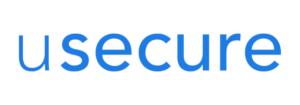Access Management
LicencingManaged ServicesConsultancy
Access Management technologies are used to create, secure, and manage user accounts within a system or network. This includes things like setting up strong passwords and enforcing password policies, enabling two-factor authentication, regularly updating account permissions and roles, and monitoring and tracking user activity to identify and prevent potential security threats.
Proper access management is crucial for maintaining the overall security of a system or network, as it helps to prevent unauthorised access and protect sensitive data from being compromised. There are multiple approaches to securing access to business systems ranging from simple solutions such as MFA & Password Managers, through to advance IAM solutions and Zero-trust or Risk based authentication.
Privilege Account Management
Identity and Access Management
Enterprise Password Management
Multi-Factor Authentication
Enterprise Password Management
Enterprise password managers are software tools that allow organisations to securely store, manage, and share login credentials for multiple users and systems within a centralised and secure platform. These are important to businesses and organisations because they help to ensure the security and privacy of sensitive company information by providing a secure platform for credential management.
Users have the ever complex task of maintaining more and more credentials for different applications, but it is important that these are kept secure and unique to minimise potential compromise. Auto-fill password managers also benefit against phishing attacks as they will not recognise incorrect urls.
IAM (Identity and Access Management)
IAM enables the right individuals to access the right resources at the right times for the right reasons. IAM is a framework of policies and technologies that authenticates and authorises access to applications, data, systems, and cloud platforms.
An IAM solution can vastly reduce your risk of unauthorised access and can be a vital part of your compliance goals. IAM solutions generally enable centralised management and control of authentication systems allowing single sign-on, multi-factor authentication, role-based access and risk-based access. At the same time as enabling the simplified management of accounts, they also provide crucial auditing and telemetry to increase access visibility.
Multi-Factor Authentication (MFA)
Traditionally, organisations have secured applications and business services with a username and password, however, with the increase in weak passwords and password rotation, advanced threats and relying on users to keep passwords secure it is no longer a workable solution.
MFA (Multi-Factor Authentication) is an access security product used to verify a user’s identity at login. It adds two or more identity-checking steps to user logins by use of secure authentication tools
“something you have, something you are, something you know”
Essentially MFA enforces that the users trying to access Applications or data are who they say they are. MFA is an effective way to protect against many security threats that target user passwords and accounts, such as phishing, brute-force attacks, credential exploitation and more.
Privileged Access Management (PAM)
Every organisation will have different user accounts that will have different levels of access. Accounts with Privileged access will be a high target for hackers as it could give them access to sensitive data, an opportunity to distribute malware or bypass existing security controls, and erase audit trails to hide their activity, resulting in them being present within your network, unnoticed for days, weeks or months.
Like so many cybersecurity measures PAM (Privileged Access Management) is a vital component in your strategy. PAM solutions work by controlling and managing access to sensitive systems, applications, or data that require elevated privileges. Typically through the use of a central platform that sets and enforces access policies as well as removing the requirement for admin users to use, know & store passwords in insecure ways.
Cloud Identity Provider (IdP)
With many applications now being web/cloud based the number of credentials, access requirements, roles and permissions is ever growing. Utilizing a cloud directory for account management is a great way to centrally manage application permissions.
Many web based apps support authentication methods such as SAML & Oauth and a cloud identity provider can manage user lifecycle, enforce password policy and add in additional security features such as MFA and zero trust or risk-based authentication. They also enable organisations to sync with other authentication sources such as Active Directory.
Risk-based Authentication
Risk-based authentication uses risk assessment algorithms to evaluate the risk level of an attempted login. The algorithms take into account various factors, such as the location of the login attempt, the type of device being used, and the user’s login history, to determine the likelihood that the login is legitimate. Based on this assessment, the authentication requirements for the login may be adjusted accordingly.
Talk to a Cyber Advisor
Our Cyber Advisors have excellent knowledge on access management solutions, request a call back to speak to us about your requirements

